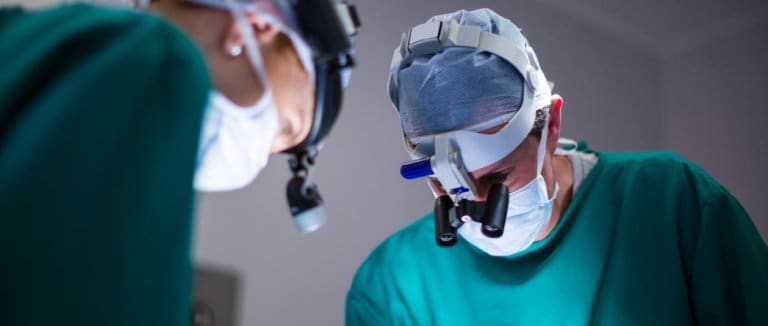Robotic Prostate Surgery: Benefits, Procedure & Recovery
Robotic prostate surgery is a treatment option for prostate conditions, including prostate cancer. This approach most often involves advanced robotic surgical equipment. Remotely controlled technology is used, providing the surgeon with greater accuracy and control throughout the procedure.

What is Robotic Prostate Surgery?
Robotic prostate surgery is a technique for treating prostate cancer, performed with the da Vinci robotic system. The procedure enables the surgeon to make highly precise, controlled movements with robotic arms, allowing for a less invasive removal of the prostate gland. This surgery can provide benefits such as reduced blood loss, lowered pain levels, a quicker recovery, and fewer complications. Robotic prostatectomy, which involves the partial or complete removal of the prostate gland, is included under the scope of robotic prostate surgery.
Advantages of Robotic Prostate Surgery
Robotic prostate surgery brings several advantages over conventional techniques. These include reduced blood loss, milder pain, fewer complications, lower infection risk, less tissue disruption, smaller incisions with less scarring, shorter hospitalizations, faster recovery, better visualization, and a more accurate surgical approach. The robotic system gives surgeons a three-dimensional view, enhancing surgical precision and control. Together, these aspects help patients feel less pain and discomfort after surgery and resume daily life more quickly.
The Process of Robotic Prostate Surgery
Robotic prostate surgery is carried out through 4-5 small incisions in the patient's abdomen. A robotic camera and various surgical tools are inserted through these openings. With this equipment, the cancerous prostate tissue is removed, and the bladder and urinary duct are reconnected using robotic assistance.
The operation is conducted under general anesthesia and usually lasts 2-3 hours. Afterward, a catheter is placed so the patient can urinate, which is generally removed 5-7 days later. Patients are typically discharged within 1-2 days after surgery. Recovery tends to be faster than with open prostate procedures, and most patients can resume their normal routines in 2-3 weeks.
Stages of robotic prostate surgery:
- The patient is placed under general anesthesia.
- Four to five small incisions are made in the abdomen.
- A robotic camera and surgical instruments are inserted through the incisions.
- The cancerous tissue of the prostate is removed.
- The bladder and urinary duct are reconnected to each other.
- A catheter is inserted.
- The patient is discharged from surgery.

Recovery Process of Robotic Prostate Surgery
The recovery process of robotic prostate surgery can vary depending on several factors, but can generally be faster compared to traditional open surgery. The hospital stay may be short for the first few days after surgery. During this time, the patient can usually be monitored with a urinary catheter and sometimes a bladder catheter. The time and amount of pain management may also vary depending on other factors.
The recovery process can vary from patient to patient, but usually patients can return to their normal daily activities within the first few weeks after surgery. The full recovery process may vary depending on personal factors, the details of the surgery and whether complications are present.
Results of Robotic Prostate Surgery
Outcomes following robotic prostate surgery may differ due to numerous factors. These include the patient's overall health, the stage of the prostate cancer, the surgeon's experience, the presence of complications, and other existing health conditions. Despite these variables, robotic prostate surgery is generally considered effective and delivers favorable results for the majority of patients.
Some of the successful outcomes of this surgery include:
- Reduction or complete disappearance of symptoms associated with prostate cancer.
- Lower surgical risks, including less blood loss and reduced risk of infection.
- Faster recovery and less postoperative pain.
- Fewer complications and minimized tissue damage.
- Shorter hospital stays and quicker overall recovery.

Why Bowel Preparation Is Critical for Prostate Surgery
Prostate surgery needs careful preparation, with bowel prep being key. The success of the surgery depends on how well the bowel is prepared. This affects the whole outcome of the procedure.
The Anatomical Relationship Between Prostate and Bowel
The prostate gland is near the rectum, part of the bowel. This is important because during prostate surgery, like a robotic prostatectomy, the surgeon must work around the bowel. Good bowel prep makes the surgery safer by keeping the bowel empty and clean.
Risks of Inadequate Bowel Preparation
Bad bowel prep can cause problems during prostate surgery. If the bowel isn't clean, there's a higher chance of infection and other issues. Also, a full bowel can block the surgeon's view, making the surgery harder. Studies show that good bowel prep can lower these risks, leading to better surgical outcomes.
Recovery and Bowel Function After Prostatectomy

Recovering from prostatectomy involves getting back to normal bowel function. Knowing what to expect can make the process easier for patients.
Timeline for Returning to Normal Bowel Function
The time it takes for bowel function to return to normal varies. Most patients see improvements in a few weeks after surgery. But some may face longer-lasting changes.
It's key to listen to your doctor's advice during this time. Keeping a healthy diet and staying hydrated are important for recovery.
Post-Surgery Diet Progression
A good diet is vital after prostate surgery. You'll start with a clear liquid diet and then move to solid foods as you heal.
- Begin with clear liquids like broth and water.
- Then, add soft, easy-to-digest foods.
- Avoid spicy or high-fiber foods that can upset your stomach.
Managing Common Bowel Issues After Surgery
Some patients face bowel problems like constipation or diarrhea after prostatectomy. Staying hydrated and eating a balanced diet can help manage these issues.
If bowel problems don't go away, it's important to talk to your healthcare provider for specific advice and treatment.
When to Contact Your Doctor About Post-Surgical Bowel Problems ?
While some bowel changes are normal after surgery, some symptoms need medical attention. Call your doctor if you have:
- Severe abdominal pain.
- Persistent constipation or diarrhea.
- Blood in your stool.
Your healthcare team is there to support you. They will help address any complications quickly.
Conclusion
Thorough bowel preparation is key to a successful robotic prostate surgery. By understanding its importance and following guidelines, you're on the right path. This ensures a smooth surgery and recovery.
Robotic prostatectomy needs careful preparation for the best results. We've discussed dietary guidelines, bowel cleansing, and other pre-surgery steps. Following these, you'll be ready for your surgery and recovery.
Recovery from prostatectomy is a healing and adjustment period. By following a post-surgery diet and managing bowel issues, you'll get back to normal quickly. Always stay informed and follow your doctor's advice for a successful recovery.
* Liv Hospital Editorial Board has contributed to the publication of this content .
* Contents of this page is for informational purposes only. Please consult your doctor for diagnosis and treatment. The content of this page does not include information on medicinal health care at Liv Hospital .
For more information about our academic and training initiatives, visit Liv Hospital Academy .



